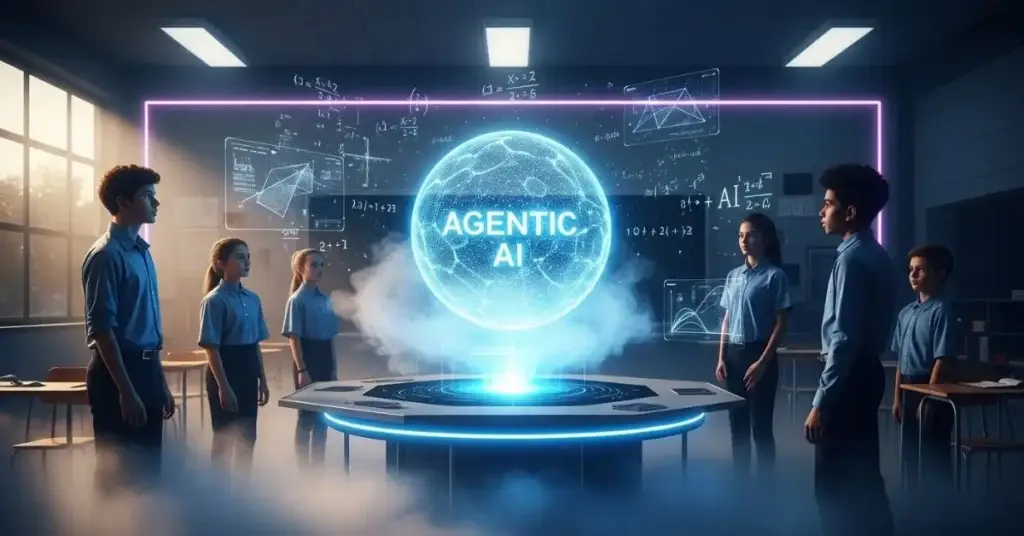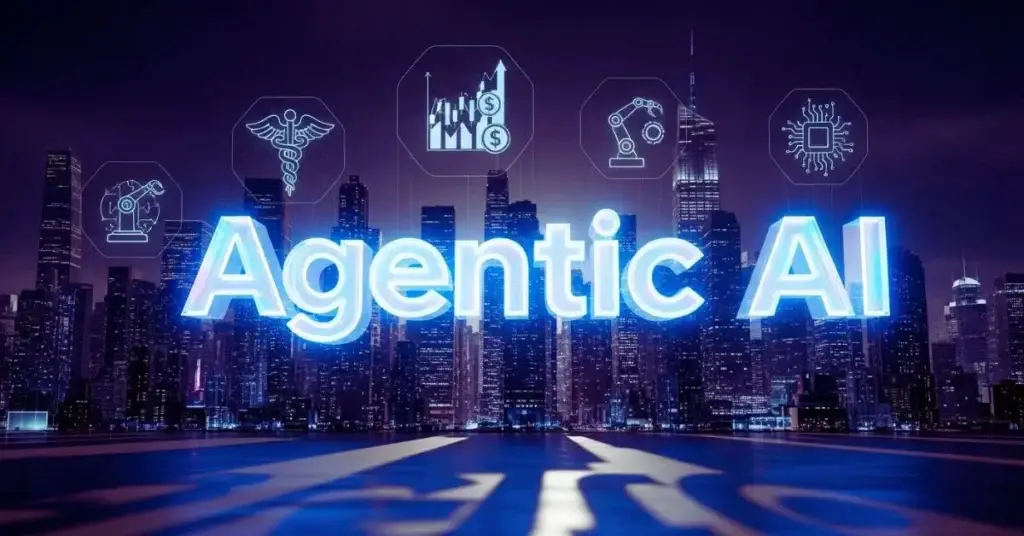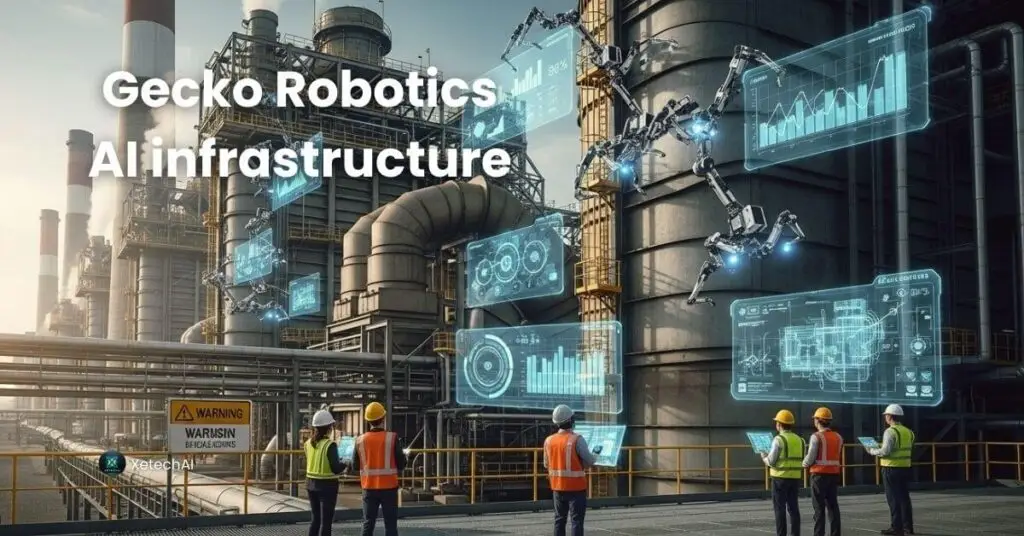
Introduction
In the rapidly evolving world of artificial intelligence and robotics, Gecko Robotics USA AI infrastructure robots are setting a new benchmark for how America manages and modernizes its critical systems. Headquartered in Pittsburgh, Pennsylvania, Gecko Robotics has emerged as one of the fastest-growing deep tech startups in the United States. By combining robotics with advanced AI through its flagship platform, Cantilever, the company is helping the U.S. maintain its aging infrastructure and preparing the nation for a future powered by automation, efficiency, and resilience.
The company’s recent achievement of unicorn status with a $1.25 billion valuation reflects the growing importance of AI-driven infrastructure solutions in the U.S. market. But what exactly makes Gecko Robotics a transformative force in America’s AI ecosystem? Let’s dive deeper.
From Startup to Unicorn: Gecko’s Journey
Founded in 2013 by Jake Loosararian, Orion Correa, and Troy Demmer, Gecko Robotics started with a mission to improve how industries inspect and maintain their physical assets. Over the years, the company developed climbing, flying, and swimming robots capable of collecting detailed sensor data from power plants, pipelines, bridges, and military assets.
This innovation attracted the attention of major U.S. investors, leading to a $125 million Series D round in June 2025, catapulting Gecko to unicorn status. With over $347 million in total funding today, Gecko stands tall as one of Pittsburgh’s most valuable startups.
This achievement represents more than just another unicorn for the American tech landscape. It’s a powerful statement that Gecko Robotics USA AI infrastructure robots are becoming the backbone of U.S. industrial modernization.
How Gecko Robotics Technology Works
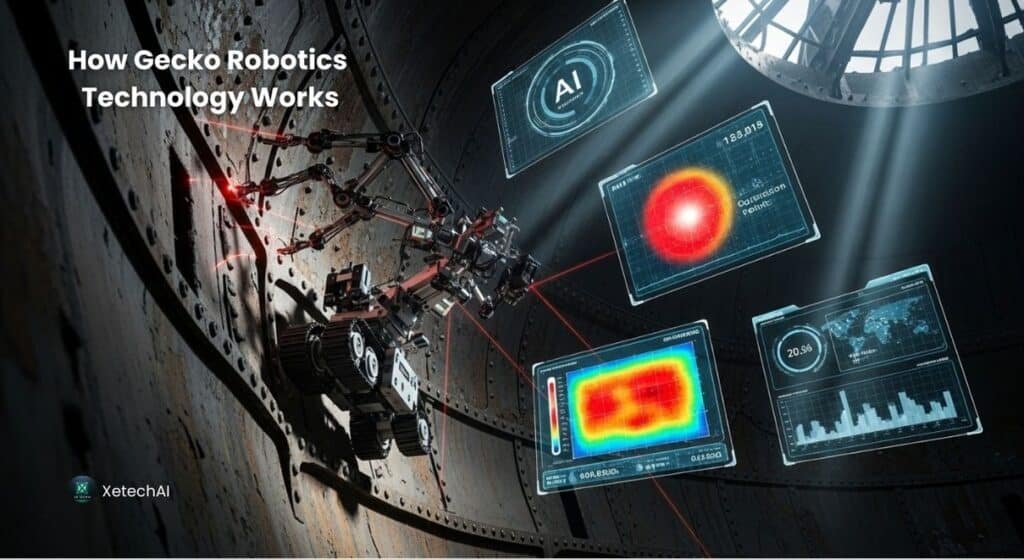
At the heart of Gecko’s innovation is the Cantilever Operating Platform, an AI-powered system that processes real-world data collected by its advanced robots.
- Robotic Inspections: Gecko’s climbing robots scale walls, tanks, and boilers to collect high-fidelity data such as corrosion levels, thickness measurements, and thermal conditions.
- AI Insights: The Cantilever platform transforms raw data into actionable insights, enabling plant operators, defense contractors, and energy companies to predict failures before they occur.
- Operational Impact: This predictive capability can reduce downtime, cut costs, and even prevent catastrophic accidents.
In the U.S., where much of the infrastructure is decades old, predicting and preventing failures is not just convenient; it’s critical for national security, economic growth, and energy independence.
Real-World Use Cases in the United States
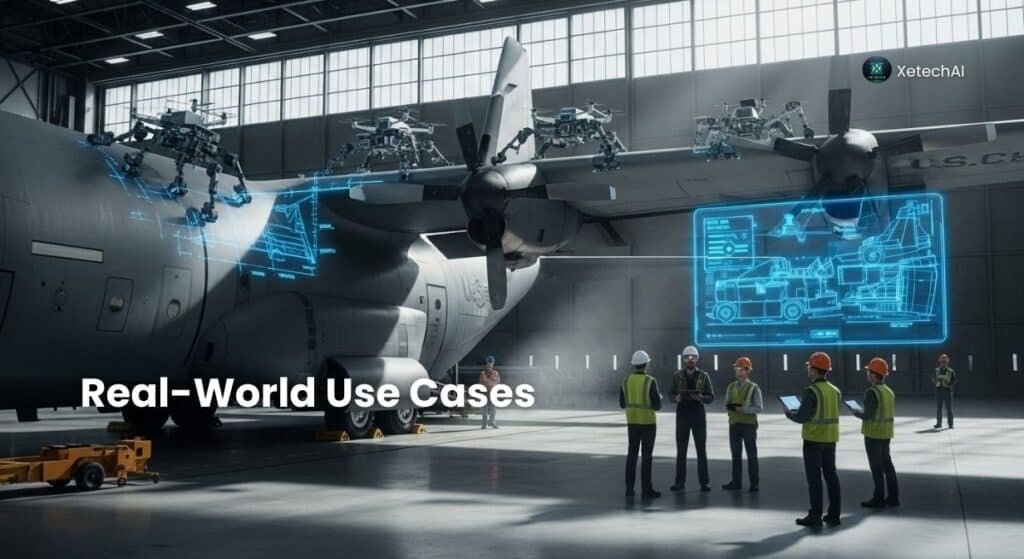
1. Energy Sector
Gecko’s robots are widely used in U.S. power plants to detect corrosion early. By spotting weaknesses that humans often miss, these robots have helped prevent costly shutdowns and accidents, saving millions of dollars annually.
2. Defense and National Security
The U.S. military relies on Gecko Robotics to maintain warships, nuclear facilities, and aircraft such as the C-130. By providing precise, data-driven insights, Gecko enables faster modernization of America’s defense assets while improving safety for service members.
3. Manufacturing and Industrial Plants
In the U.S. manufacturing sector, plants often generate massive amounts of data up to 12TB daily, but much of it goes unused. Gecko Robotics converts this data into predictive insights, boosting productivity and minimizing losses.
In each case, the Gecko Robotics USA AI infrastructure robots are not just tools, but enablers of more innovative, safer, and more resilient American industries.
Why the U.S. Needs Gecko Robotics More Than Ever
The United States faces a critical challenge: its infrastructure is aging, and the workforce gap in industrial sectors is growing. With a 4:1 ratio of workers retiring versus new entrants, the country risks falling behind in maintaining and upgrading essential systems.
Gecko Robotics addresses this gap by making work safer and less labor-intensive, empowering fewer workers to manage larger and more complex assets. Moreover, their AI-powered data ensures that American industries stay competitive globally, especially against rivals like China that are aggressively digitizing infrastructure.
In essence, Gecko Robotics USA AI infrastructure robots are modernizing systems and safeguarding America’s leadership in the AI era.
Partnerships and Growth in the United States
Gecko has already established several strategic partnerships in the U.S.:
- Energy Modernization: A $100 million deal with NAES to upgrade U.S. power grids.
- Defense Technology: Collaboration with L3Harris Technologies to develop XR solutions for remote aircraft inspections.
- Regional Growth: Pittsburgh is now home to seven unicorns, with Gecko helping shape the city’s identity as a U.S. robotics hub.
These moves show that Gecko is innovating and expanding its footprint in sectors most critical to American economic and security interests.
Recognition and Market Outlook
- CNBC Disruptor 50: Ranked #30 in 2025, highlighting its impact on U.S. industries.
- Market Growth: The robotics and industrial AI market in the United States is expected to expand rapidly, contributing to a projected $258 billion global market by 2035.
- Valuation Impact: With a $1.25 billion valuation, Gecko is now among the most influential AI startups in the country.
These recognitions underscore the credibility and trust Gecko has earned within the American market, an essential component of EEAT standards.
Challenges Ahead
While Gecko Robotics has made impressive progress, challenges remain:
- Integration: Many U.S. industries still operate with outdated legacy systems.
- Regulation: Government approval for AI in sensitive sectors like defense and energy is complex.
- Workforce Training: Reskilling the American workforce to use AI tools effectively is ongoing.
Addressing these issues will determine how quickly Gecko’s technology scales nationwide.
Conclusion
The rise of Gecko Robotics USA AI infrastructure robots marks a turning point in how America approaches its aging infrastructure, industrial modernization, and defense readiness. From energy plants to military aircraft, Gecko’s AI-powered robots deliver measurable outcomes, safer operations, lower costs, and higher efficiency.
With strong investor backing, strategic partnerships, and growing recognition, Gecko Robotics is poised to remain a U.S. AI and robotics industry leader. More importantly, it is helping secure America’s future in an era where data, automation, and resilience are the keys to global leadership.
For U.S. policymakers, businesses, and citizens alike, Gecko Robotics represents not just another unicorn but a vital ally in building a smarter, safer, and more sustainable America.
While Gecko Robotics focuses on critical systems through AI-powered robots, the ecosystem is expanding. Google’s $9 Billion AI investment in Virginia proves that AI infrastructure in the USA is gaining unprecedented momentum
FAQs about Gecko Robotics USA AI Infrastructure Robots
1. What are Gecko Robotics’ AI infrastructure robots used for in the USA?
Answer: Gecko Robotics designs wall-climbing, flying, and swimming robots powered by AI. In the USA, these robots inspect power plants, pipelines, defense systems, and manufacturing sites. They help detect corrosion, cracks, and hidden faults that humans might miss, making American infrastructure safer and more reliable.
2. What is the Cantilever platform by Gecko Robotics?
Answer: Cantilever is Gecko’s AI-powered infrastructure intelligence platform. It transforms the massive data robots collect into a clear, real-time “digital health record” of assets. This helps U.S. companies and government agencies predict failures before they happen.
3. How does Gecko Robotics ensure accurate inspection data?
Answer: Unlike manual inspections that may leave gaps, Gecko robots gather millions of data points quickly and precisely. Their advanced localization technology works without GPS, ensuring accuracy in complex environments like nuclear plants and defense facilities.
4. Which U.S. industries benefit from Gecko’s AI robots?
Answer: Gecko Robotics works across energy, oil & gas, manufacturing, and defense sectors. These robots support critical national infrastructure from boilers in U.S. power plants to U.S. Navy submarines and aircraft carriers.
5. Does Gecko Robotics work with the U.S. military?
Answer: Yes. Gecko has contracts with the U.S. Air Force, Navy, and Columbia-class submarine program. Their AI-powered robots help inspect warships, missile silos, and aircraft carriers, improving readiness while reducing costs and risks.
6. What major deals has Gecko signed in the U.S. energy sector?
Answer: In February 2025, Gecko secured a $100 million deal with NAES to maintain U.S. power plants. This partnership ensures safer, more efficient, cost-effective inspections across the American energy grid.
7. How do Gecko robots improve infrastructure safety?
Answer: Gecko robots provide faster, deeper, and more reliable inspections than traditional methods. By detecting risks early, they reduce downtime, avoid accidents, and extend the life of U.S. infrastructure assets.
8. What is Gecko Robotics’ market valuation?
Answer: As of June 2025, Gecko Robotics has officially reached unicorn status with a $1.25 billion valuation. This milestone shows its strong growth in the U.S. AI and robotics industry.
9. Why is clean infrastructure data critical for AI?
Answer: AI is only as smart as the data it receives. Gecko solves the “dirty data problem” by collecting high-quality, real-world data from infrastructure. This ensures AI predictions are trustworthy, actionable, and valuable for U.S. industries.
10. How fast are Gecko robots compared to human inspections?
Answer: Gecko’s robots can collect tens of millions of data points in hours, compared to weeks for manual inspections. On U.S. aircraft carriers, this means faster decisions, reduced do

